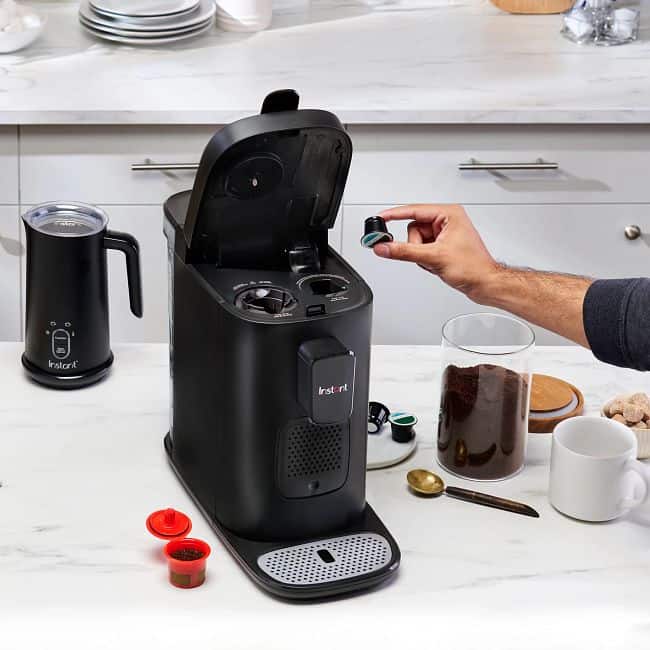Master the Art of Rinsing Your Starbucks Coffee Machine: A Comprehensive Guide to Ensuring Optimal Taste and Performance

In the world of coffee brewing, there’s nothing quite like a freshly brewed cup from your cherished Starbucks coffee machine. But have you ever wondered how to truly master the art of rinsing this invaluable appliance? Look no further, as we present to you a comprehensive guide that will take your understanding of rinsing to new heights and ensure both optimal taste and unparalleled performance in every brew.
From delving into the importance of regular cleaning routines to exploring effective techniques for removing stubborn buildup, this article is your ultimate resource for elevating your Starbucks coffee experience to extraordinary levels.
The Importance of Regular Cleaning Routines
Regular cleaning routines are crucial for maintaining the optimal taste and performance of your Starbucks coffee machine. By diligently following a cleaning schedule, you can prevent the buildup of residue, bacteria, and unpleasant odors that can affect the quality of your coffee.
Cleaning not only enhances the flavor of your beverage but also extends the lifespan of your machine. Neglecting regular cleaning can lead to clogged filters, decreased water flow, and even mechanical failures. It is essential to prioritize cleanliness to ensure consistent brewing standards and avoid costly repairs or replacements.
To make cleaning easier, Starbucks provides comprehensive guides for each specific coffee machine model they manufacture. These step-by-step instructions simplify the process by breaking it down into manageable tasks. Following these guidelines regularly will help maintain peak performance and deliver consistently delicious cups of coffee every time.
Understanding the Anatomy of Your Starbucks Coffee Machine
To effectively rinse your Starbucks coffee machine, it’s important to understand its anatomy. There are several key components that play a crucial role in producing optimal taste and performance:
- Boiler: This is where water is heated to the desired temperature for brewing. It’s important to regularly flush out any mineral build-up in the boiler through descaling.
- Pump: The pump creates pressure which forces hot water through the coffee grounds for extraction. Ensure proper maintenance by cleaning and lubricating it periodically.
- Grouphead: Located above the filter basket, this component distributes hot water evenly over the coffee grounds during extraction.
- Steam wand: Used for steaming milk, this part should be purged before and after each use to prevent cross-contamination between different flavors of milk or drinks.
Understanding these essential parts will help you navigate our comprehensive guide on how to rinse your Starbucks coffee machine properly, ensuring great tasting espresso while keeping your machine running smoothly!
Step-by-Step Guide to Properly Rinsing Your Machine
Preparing your machine for rinsing
- Be sure to turn off your Starbucks coffee machine and unplug it from the power source before beginning the rinsing process.
- Remove any remaining coffee grounds or filters from the machine, ensuring that no residue is left behind.
- Prepare a mixture of hot water and white vinegar in a 1:1 ratio. This solution will effectively clean and descale your machine.
Rinsing your machine thoroughly
- Fill the water reservoir with the vinegar and water mixture, making sure not to overfill it.
- Place an empty carafe under the brew basket to catch any liquid during the rinse cycle.
- Start the rinse cycle by turning on your Starbucks coffee machine. Allow the vinegar and water solution to run through until half has emptied into the carafe.
- Pause the rinse cycle and let it sit for about 15 minutes to allow adequate time for descaling.
- Restart the rinse cycle, letting it continue until all of the solution has passed through into the carafe.
Finishing touches
- Dispose of any remaining liquid in both the carafe and water reservoir after completing each rinse cycle. 2 . Rinse out both containers thoroughly with clean water to ensure there are no traces of vinegar left behind that could affect taste or performance.
Remember, regular cleaning and maintenance will keep your Starbucks coffee machine performing optimally, resulting in delicious cups of fresh-brewed coffee every time!
Effective Techniques for Removing Stubborn Buildup
One effective technique for removing stubborn buildup from your Starbucks coffee machine is to use a mixture of vinegar and water. Fill the reservoir with equal parts white vinegar and water, then run the machine through a brewing cycle. This will help break down any mineral deposits or residue that may have accumulated over time.
Another method you can try is using a coffee machine cleaning solution specifically designed to dissolve stubborn buildup. These solutions typically contain citric acid, which acts as a powerful cleaner. Simply follow the instructions on the packaging to effectively remove any residue from your machine.
If the buildup is particularly stubborn, you can also try soaking removable parts of your coffee machine in hot soapy water or vinegar overnight. This allows any hardened residue to soften and makes it easier to scrub away.
Regular cleaning and maintenance are important not only for optimal taste but also for maintaining the performance of your Starbucks coffee machine.
The Role of Water Quality in Rinsing and Brewing
Water quality plays a crucial role in both rinsing and brewing processes, impacting the taste and overall performance of your Starbucks coffee machine. Here are some key points to consider:
- Mineral Content: Water with a balanced mineral content is ideal for rinsing your machine. It helps remove any residue or buildup without leaving behind unwanted flavors. Avoid using water that has excessive minerals, as it can lead to scaling issues.
- Purity: Always use clean, pure water for optimal results. Impurities such as chlorine or bacteria can affect the taste and aroma of your coffee.
- Temperature: Ensure that the rinse water is at an appropriate temperature – neither too hot nor cold – for effective cleaning. Extreme temperatures can damage internal components.
- Filtered vs Tap Water: Consider using filtered water instead of tap water when brewing coffee. Tap water may contain impurities that impact the flavor profile.
By paying attention to these factors, you can maintain the quality and performance of your Starbucks coffee machine while enjoying consistently delicious cups of coffee every time you brew!
Expert Tips for Maintaining Optimal Taste and Performance
- Regularly clean your coffee machine: A clean machine is key to a great tasting cup of coffee. Make sure to thoroughly rinse all removable parts, such as the carafe, filter basket, and water reservoir. Use warm soapy water and a non-abrasive sponge or cloth. Rinse them well before reassembling.
- Descaling periodically: Over time, mineral deposits may build up inside your Starbucks coffee machine which can affect its performance and taste. To combat this issue, descaling should be done every few months using a mixture of white vinegar and water. Run this solution through the machine according to the manufacturer’s instructions.
- Wipe down the exterior surfaces: Don’t forget about cleaning the outside! Use a damp cloth or sponge to wipe away any spills or stains on the exterior surfaces of your Starbucks coffee machine.
By following these expert tips for maintaining optimal taste and performance, you’ll ensure that each cup brewed from your Starbucks coffee machine is deliciously satisfying every single time!






One Comment